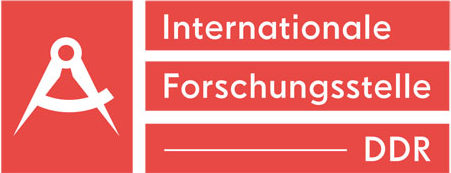Professional ethics and health policy do not form a dichotomy. An article on working conditions in the GDR’s health care system.
Author: Max Rodermund
Originally published in the May 1 insert of the junge Welt on April 27, 2022.

If you talk to former doctors and nurses in the GDR’s health care system, you don’t just get a glowing picture of the working conditions and the state of affairs in hospitals.
In the framework of the publication, “Socialism is the best prophylaxis!”, by the International Research Center GDR, we were able to talk to some of the health care professionals. For example, we spoke with Irene, who was trained as a nurse in the early 1960s and remembers the harsh day-to-day manual labor condiions in the hospital. In the early days, she sometimes had to boil syringes and bandages for reuse, and on some night shifts she was single-handedly responsible for 60 patients. Conversations with other former health care workers also confirm that there were actually never enough nurses. To cover second and third shifts in the hospital, personnel sometimes had to be called in from the ambulatory care sector.
These experiences express problems that cannot simply be casually brushed aside in the day-to-day workings of the GDR’s health care system. Despite the fact that a study from 1970 does not show any significant deviations in nursing care ratios from those in the Federal Republic at the time: given territorial and subject-related variations, the average is 5.8 beds per registered nurse. Including auxiliary nurses, the study yields 3.8 beds per employee.
In order to understand the significance of the difficulties and problems and to classify them correctly, one cannot avoid examining the causes. One quickly comes to the conclusion that a superficial, selective view distracts from the essence of the different nature of the GDR’s health care system and the prevailing working conditions in it. Material shortages, technical backlogs and labor shortages can ultimately only be explained in connection with the general economic difficulties, which in turn depended to a large extent on the founding conditions of the GDR as well as the sanctions and blockade policies imposed by the West.
If one detaches oneself from this superficial view, the tendency toward a comprehensive upgrading of the profession stands out in relation to the working conditions of the mid-level medical professions in the GDR. This does not refer to pay, which was inferior in the GDR and, in addition to shift work, was a reason for a low average length of service in the profession, i.e., it contributed to a high turnover of nursing staff.
The equalization of the employment conditions of the various professional groups in the entire health care system reduced the traditional gapping in social status between the professions. This meant a radical change, especially for outpatient care. The privately practicing physician, operating as a small businessman, became an employee of the state health care system, as did the nurse. Employer” and “employee” became colleagues. But even in the inpatient sector, in hospitals, labor laws ensured fixed working and vacation hours, pay scales, health controls, access to social and cultural rights, and more for everyone. The protection and enforcement of these rights was guaranteed by the health care union responsible for this sector. In 1979, with 496,081 members, 97.1 percent of all health care workers were organized here, 83 percent of whom were women.
The process of overcoming the privileges and professional status of physicians did not proceed in a linear fashion. The aggressive recruitment campaigns from the Federal Republic forced the GDR to compromise with the medical profession. For example, at the end of 1960, a brief push was made to organize physicians, dentists and pharmacists autonomously. This idea was shelved again when the border was secured in 1961 and the resulting decrease in the emigration of physicians who had been trained in the GDR. And the joint organization in the health care trade union was further able to strengthen the trend toward unification of the professions and specialties.
The standardized and state-financed training of nurses had the same effect. Basic medical subjects were as much a part of the three-year technical school training as direct hands-on work in a hospital. Even after entering the profession, a comprehensive system of continuous education for physicians and medical staff made it possible to obtain ongoing qualifications. A so-called head nurse, responsible for organizing the nursing operations and overseeing the development of the hospital together with the medical director, underwent further training in a diploma program. The high level of professional training supported the occupational emancipation of the nursing staff.
The overall health policy of the GDR contributed decisively to the upgrading of nursing care. The objective of protecting public health was made possible by the absence of private profit interests and was given a high political priority, which could be realized through a unified and society-wide structure of the health care system. This principled orientation in health policy corresponded to the concrete task of healthcare workers to heal and care for patients and in the process gave them strong support. The frustrating experience of not being able to fulfill one’s task of care and medical attention, which is commonplace today, was essentially overcome in the GDR.

